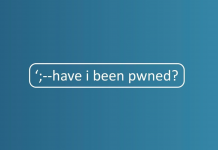

Here’s a fun fact: Hackers, just like bankers, real estate agents and collectors of Star Trek memorabilia, attend conferences. Even better: they play games at the conferences. One of the games they play has attendees aggressively competing to access any device in the hall, thereby demonstrating prowess in obtaining sensitive information. The goal is to exploit any vulnerability, or crack that which is perceived to be impenetrable, and share details for both educational purposes and bragging rights. This is the kind of thing you’d expect at a Black Hat hacker conference and why people with sensitive information on computers probably shouldn’t bring them to the party. Especially employees of the Securities and Exchange Commission Trading and Markets division. And they really shouldn’t have brought their computers with them. Except they did. Yes. This really happened.
Computers owned by the Securities and Exchange Commission Trading and Markets division were brought by SEC staffers to a hacker convention. They contained unencrypted, step-by-step instructions to shut down our financial trading system. Essentially: A Hacker’s Guide to our Financial Universe.
Consider for a moment the kind of information that was hanging out in these computers, according to a recent Reuters story:
- How the computers and networks inside massive stock exchanges including NASDAQ and the New York Stock Exchange are linked together.
- How, in the event of a terrorist attack or natural disaster, what are the specific steps required to shut down the entire American stock exchange system, and how, after the disaster, we safely turn those systems back on.
- What specific security measures have the exchanges implemented to secure their systems against accidental data breaches and determined hackers.
Sophisticated algorithms or complex malware were not required to crash the world’s largest exchanges (and with them the world economy). No need for security clearance. A common thief could have hit the lottery with these babies.
The fact that S.E.C. employees brought Wall Street’s blueprints to a Black Hat hackers’ conference is both terrifyingly dumb and dumbfounding, despite the fact it appears, according to Reuters, that no data was breached. Nevertheless, it is hard to conceive of a less secure venue than this get-together where computer security experts and government intelligence leaders swap notes with all stripes of cyber-ninjas.
With the sensitive information purportedly contained on these hard drives, even a run-of-the-mill hacker arguably could possess the foundational knowledge to potentially shut down Wall Street like he was flipping off a light switch. Yet there it was at a convention center overflowing with hackers, brought by public servants whose job is to secure the American financial system from natural and man-made disasters. Imagine the value of that data on the black market?
Let’s be clear about this. The Trading and Markets Division of the S.E.C. is responsible for monitoring compliance with “Automation Review Policies,” a set of voluntary but crucial rules regarding security measures and business continuity plans for how the various stock exchanges will respond to disasters. And yet there they were, courting disaster.
While taking the core of our financial markets on a cross-country joyride, did these supposed security experts ever happen to leave their computers in their vehicles, as did an employee at the Kennedy Space Center, whose NASA-issued laptop was stolen from his car in March? Was any of the sensitive data ever disseminated by mistake, as when the Veterans Administration emailed the names and Social Security numbers of at least 2,257 veterans to Ancestry.com?
Nobody really knows. The Reuters story is based upon an as-yet-unreleased report by the S.E.C.’s inspector general. However, security issues have surfaced before. According to a report issued by agency’s inspector general in 2010 the S.E.C.’s Office of Information Technology had repeatedly failed to encrypt data on mobile devices.
Again, so far there is no evidence that any of the data was accessed by hackers or spies, according to Reuters’ inside sources. That’s the good news. However, I submit for your consideration that the good news was made possible by dumb luck.
So, how many times must we endure the colossally negligent acts of people who are supposedly protecting our sensitive data, yet do the exact opposite? How long will we sit idly by as bureaucrats expose all manner of sensitive data — personal, corporate, scientific — to the designs of the ill-intentioned and the vagaries of chance?
Is it individual execution failure, or systemic breakdown? To my mind, it’s the latter. I believe that we are staring down the missile tube of a nuclear sub, the launch sequence has begun and without taking firm measures to stop the snap count, “Cyber-geddon” is imminent. I am hardly alone.
We need a comprehensive national cyber-security policy today that establishes how government entities and private suppliers of critical infrastructure protect our data from breach and attack. Such a policy must not lock organizations into any particular tool or technology, since the rate of technical innovation among both hackers and those who pursue them only continues to accelerate.
Rather, a successful cyber-security policy must set forth our expectations for how organizations safeguard data. That will include encryption, obviously, with staggered layers of sophistication applied to increasingly important types of data; hard and fast rules regarding data creep, preventing companies and government agencies from gathering more information than is required to complete the goal immediately at hand; and guidelines for how long organizations can keep data before being required to destroy it. Since none of these goals can be met overnight, each must include a series of guideposts to assure that companies and government agencies stay on track.
Finally, whatever cyber-security policy we devise must provide for severe punishments for those who break the rules. Yes, I mean prison time. Unlike some other types of white collar crime, willful or accidental leakage of sensitive data to unauthorized parties can endanger lives, as when an identity thief with a rare blood type accesses medical services using someone else’s personally identifiable information, or crimes are committed in the name of an innocent victim.
As this latest S.E.C. “incident” makes clear, it can also endanger our entire way of life. If hackers ever managed to steal one of these laptops or gain unauthorized access to the data contained on the hard drives, they not only could have shut down America’s largest stock exchanges, they also could have thwarted emergency efforts to bring those exchange systems back online, perhaps indefinitely. How many billions of dollars would that have cost in lost trading revenue, failed contracts, life savings, erosion of investor confidence and/or simple, utter chaos?
We dodged a bullet this time. And, while (as far as we know) these unencrypted laptops containing the blueprints of the American financial system were not stolen or hacked, our good fortune is only a matter of luck. Inevitably, it will run out someday. Maybe the bad guys will devise the ultimate super-sophisticated mega-hack that steals all our Social Security and bank account numbers with a single keystroke. Or maybe our misfortune will turn into a hacker’s good fortune, and the laptop or mobile device they steal from or compromise at a convention hall contains the ultimate how-to manual for crushing the capitalist system as we know it.
Enough with bullet-dodging, my friends. We need to design and implement a comprehensive cyber-security policy now. If we fail, the next bullet could be a headshot.
This article originally appeared on Credit.com. Follow them on Twitter and Facebook.









